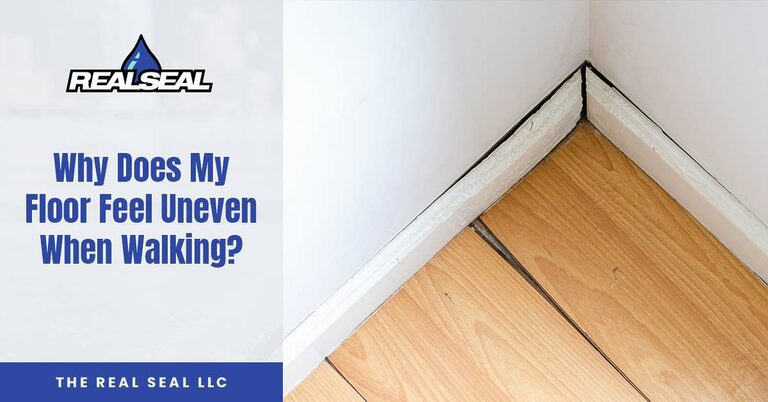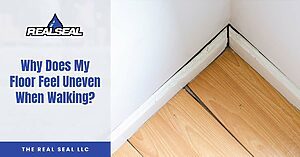Searching for information on why your floor feels uneven when you’re walking on it? If so, you’ve landed on the right page because that’s what this article is about. We’ll review the leading causes of uneven floors, how they’re repaired, and offer tips on preventing them.
What Causes a Floor to Feel Uneven When Walking On It?
Two of the most common culprits behind uneven floors are differential settlement and, if you have a crawl space foundation, problems with the wooden structures in your crawl space (beams, joists, support posts, etc.)
Let’s go over both…
What is differential settlement, and how can it cause a floor to become uneven?
Differential settlement is an issue that occurs when some parts of a foundation settle into the ground more than others. The best way to describe differential settlement and how it affects a foundation is via an illustration:
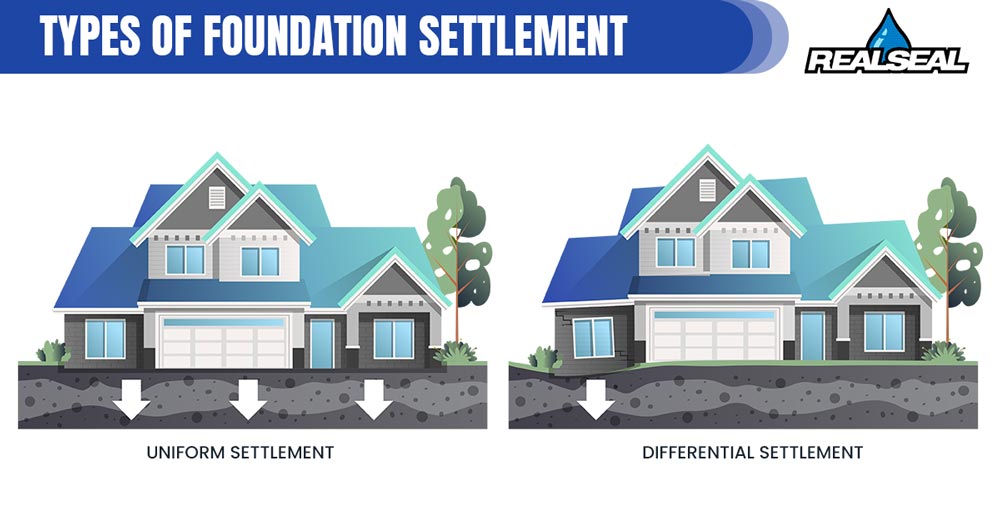
A small amount of uniform settlement is pretty common after a structure is built, and although it might cause a few tiny wall cracks, it’s usually nothing to worry about.
Differential settlement is another matter. Differential settlement places a lot of stress on the foundation and can cause severe structural damage if it isn’t promptly corrected.
Various factors, including inadequate soil compaction before construction, expansive soil, erosion-prone soil, drainage problems, and seismic events, can cause differential settlement.
How a problem in the crawl space can cause an uneven floor
If your home has a crawl space foundation, the culprit behind the uneven floor could be a problem with the wooden structures in the crawl space. That is, the joists, beams, support posts, etc.
The damage could have been caused by various things, including wood rot, damage from termites, joists that are too small, an insufficient number of joists, beams or support posts, support posts that have settled because of soggy soil in the crawl space and are no longer vertical, insufficient or degrading footings, or something else.
Note that we’re not talking about a wooden floor warped due to water damage, for example. We’re talking about serious problems with the home’s foundation, not the floor.
If You Have An Uneven Floor, Look Around for Other Signs of a Foundation Problem
If your home’s floor feels uneven when walking on it, look around for other signs of a foundation problem. Common signs of differential settlement include the following:
- Uneven floors
- Wall, ceiling, and floor cracks
- Stair step cracks in brick or masonry
- Doors and windows that don’t open and close correctly
- Chimneys and porches that are pulling away from the house
- Walls that are no longer in contact with the floor or ceiling
- Torn wallpaper (The wall behind the wallpaper might be cracked.)
- A bowed and/or cracked basement wall
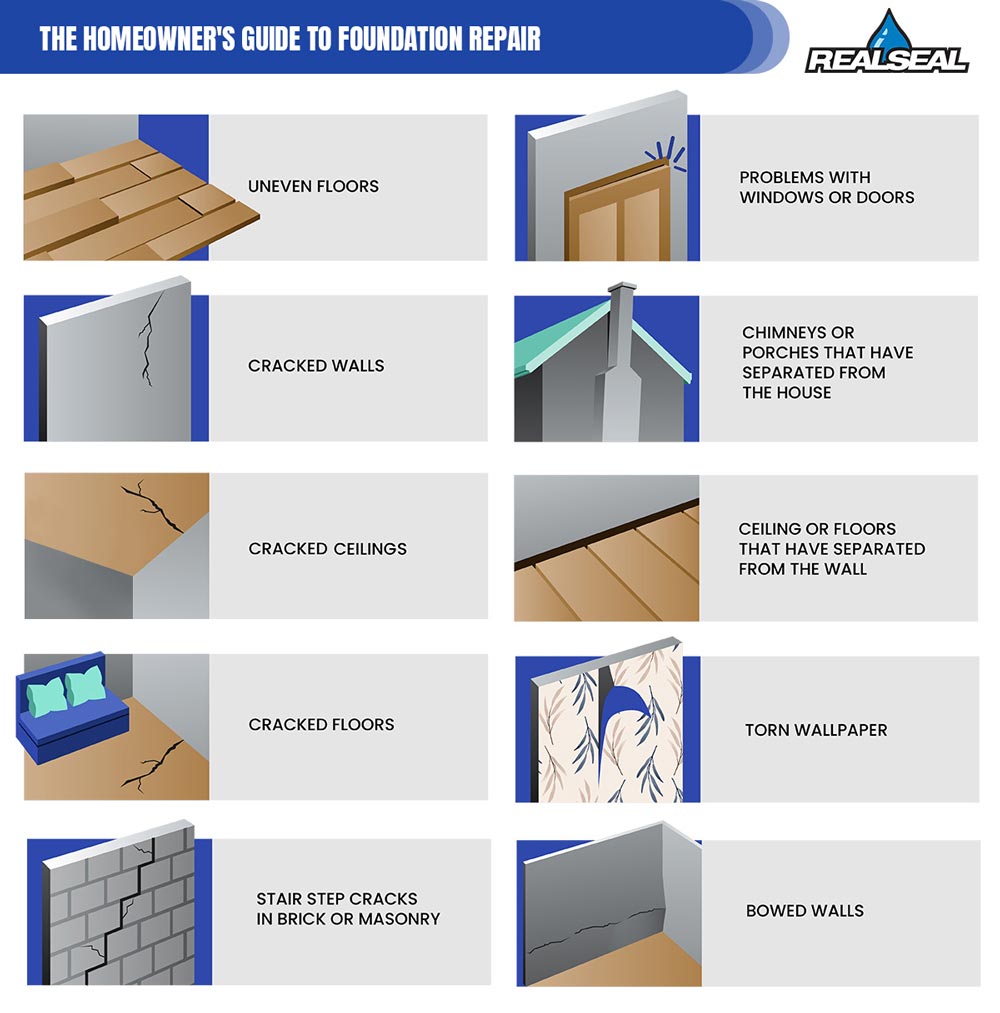
If there’s a problem in your crawl space that’s causing the uneven floor, you might notice any of the following:
- A musty smell – This could mean your crawl space is full of mold. If so, the wooden structures may be deteriorating from mold. Mold can’t grow without moisture. So, if there’s mold in your crawl space, you have a moisture problem that needs addressing.
- Your floor is bouncy – You might notice that your uneven floor feels spongy when you walk on it. Furniture might even shake when you walk by.
- There’s mold on the floor or baseboards above the crawl space – This means there’s probably mold in your crawl space.
- You’ve noticed condensation in your home’s living area – This is another sign your crawl space has a moisture problem and it might have affected the wooden structures in the crawl space.
- Windows and doors don’t open and close properly – This happens because everything is out of plumb.
- Cracks in your walls or floors
If you notice any of the issues mentioned above – or even something not mentioned, if it strikes you as suspicious – don’t hesitate to contact a foundation repair specialist and ask for a foundation evaluation. Foundation issues spotted early cost less to repair. If you act fast, you’ll save money.
Repair Solutions for an Uneven Floor
When addressing an uneven floor, it’s essential to thoroughly investigate the root cause of the problem. This will ensure that the repair solution is effective and long-lasting. If the uneven floor were caused by differential settlement, the repair solution would be different than if a problem in the crawl space caused the uneven floor. (By the way, crawl space foundations can also suffer from differential settlement.)
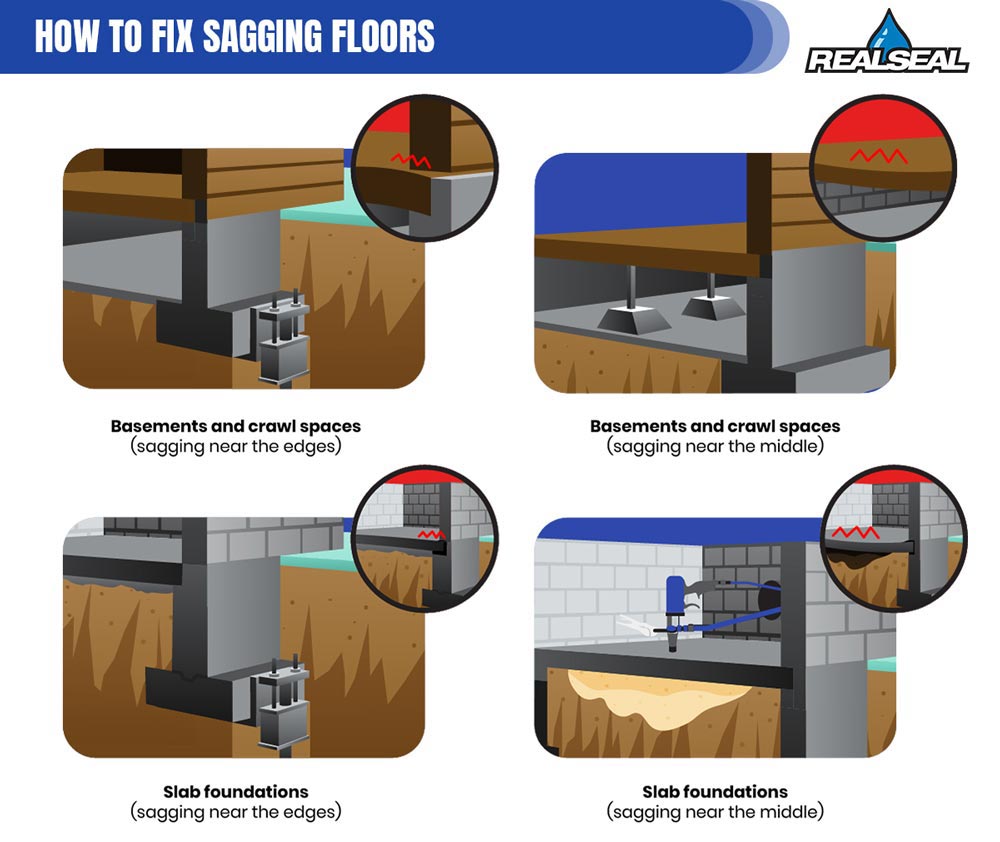
Repair solutions for differential settlement
Differential settlement is corrected using a repair solution called “underpinning.” This involves using push, helical, or slab piers to extend the foundation to load-bearing soil. Once the piers are in place, the foundation is raised as much as possible without causing damage. In many cases, this will correct the uneven floor. For more information about underpinning, see What Is Underpinning?
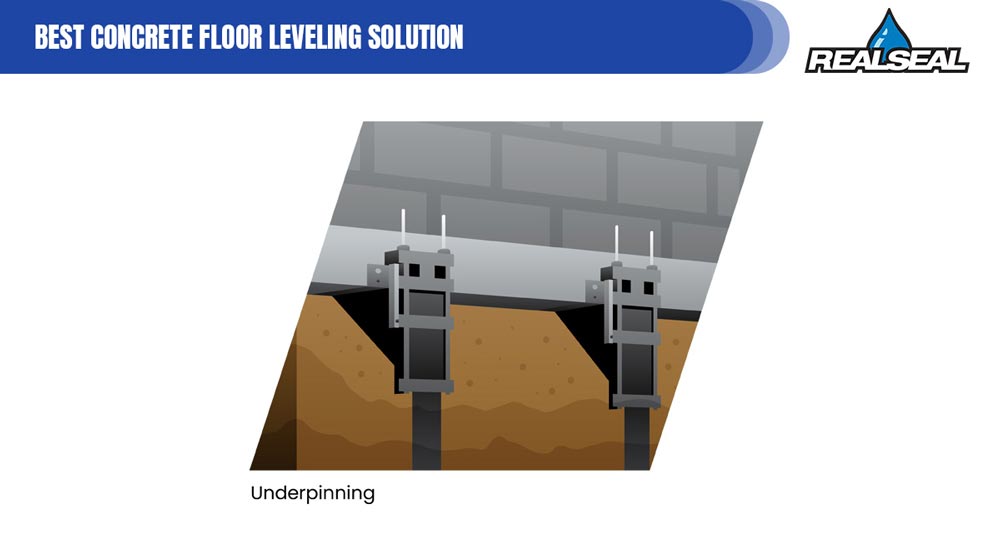
Possible repair solutions for problems in the crawl space
If the uneven floor is related to a problem with the wooden structures in the crawl space, the repair solution might be replacing one or more wooden support posts, adding supplemental I-beams, or installing screw jacks. Of course, if the problem in the crawl space stems from poor drainage around the foundation, that will also need to be addressed. For more information, see Why Is There Mold In My Crawl Space?
Tips on How to Help Prevent Foundation Trouble
The good news is there are ways to help prevent foundation trouble. These include the following:
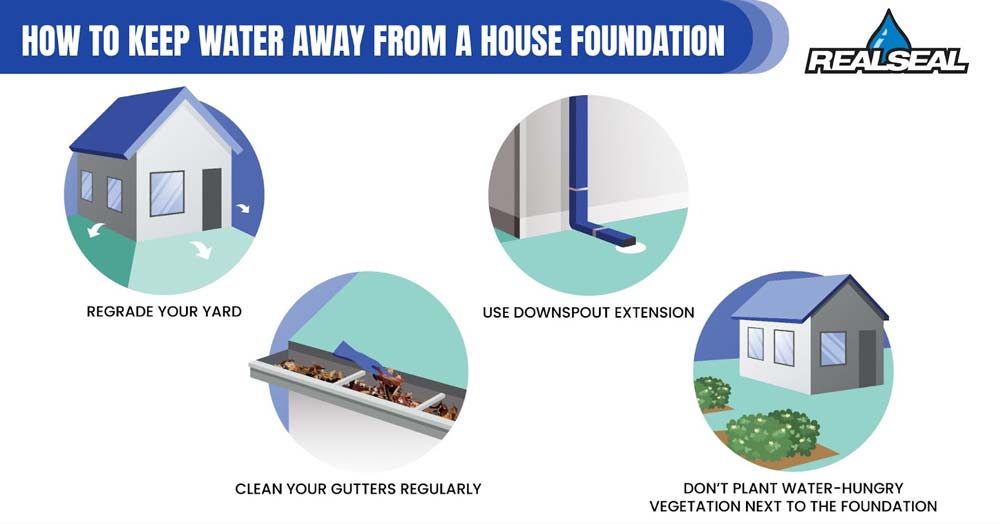
- Regrade the yard around the foundation – This process involves adjusting the slope of your yard so that groundwater drains away from your foundation. When groundwater drains towards your foundation, the soil around your foundation will become saturated, leading to issues such as differential settlement and bowed, cracked foundation walls. By regrading your yard, you can prevent water from pooling around your foundation, thus minimizing the likelihood of structural issues.
- Install downspout extensions – Installing downspout extensions is a simple and effective method to divert rainwater away from your home and protect your foundation. We recommend releasing runoff at least 15 feet away from your foundation.
- Clean your gutters regularly – Clogged gutters can cause water to overflow, run down the side of your house, and soak the ground around the foundation. By cleaning your gutters regularly, you can ensure proper drainage and help avoid foundation problems.
- Keep trees away from the foundation – Some trees have invasive root systems that can cause severe structural damage to a foundation. Ensure that trees, specifically trees with invasive root systems, are planted a safe distance from your foundation.
- Install a drain tile system – A drain tile system redirects groundwater away from your home’s foundation. If you live in an area with a high water table or with significant rainfall, a drain tile system will help protect your foundation.
If you’re concerned about an uneven floor in your home, contact The Real Seal today to schedule a foundation evaluation. If we find a problem, we’ll give you a repair estimate.
